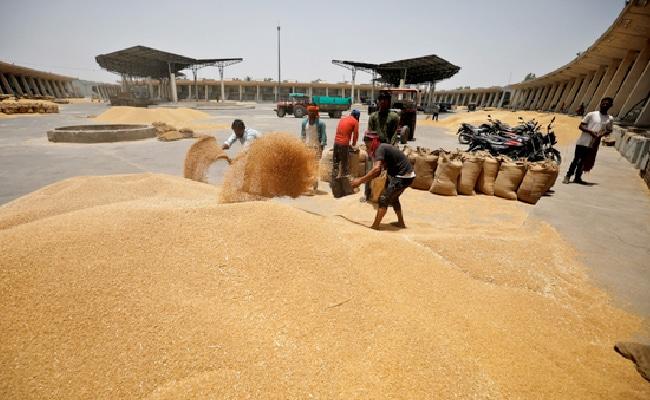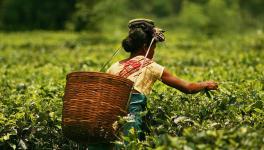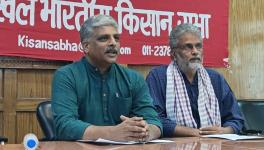How Helpful is MSP for Wheat When Agricultural Policies Are Wrong?

Image Courtesy: PTI
The Cabinet Committee on Economic Affairs, in a meeting held on October 18, chaired by Prime Minister Narendra Modi, decided to raise the Minimum Support Price of six rabi crops. The MSP of wheat, the major rabi agricultural commodity, was Rs. 2,015 per quintal in 2022-23, which has been increased to Rs. 2,125 per quintal for the 2023-24 marketing season. The Rs. 110 per quintal increase works out to a 5.46% increase over last year. But agricultural production costs have been increasing rapidly for several years. Farmers and labourers are worried about their declining purchasing power due to rising prices. Further, the MSP announced by the government is lower than the price per quintal suggested by nine states.
According to the government, the per quintal of wheat increase amounts to 100% and will benefit the farmers. But farmer organisations and some political parties describe this hike as negligible compared to the pace at which agricultural production costs are rising. They demand the implementation of the Swaminathan Committee’s recommendations, which include fixing the MSP of agricultural commodities at 50% profit over the C-2 production costs. The C-2 cost includes the value of inputs that farmers purchase from the market and their own inputs used for growing crops.
Despite objections and opposition to the MSP system, these prices have helped reduce the oppression of farmers in the open market. Although only some states purchase certain agricultural commodities at these prices, they signal other states and regions where agri-commodities are not purchased at MSP, thus contribute to reducing farmers’ suffering.
India started its agricultural price policies during the Second World War. An important phase in agricultural price policy was in 1965 when the Agricultural Prices Commission was established. Since its inception, this commission has recommended the MSP of some agri-commodities to the central government, which the Centre has generally followed. In the initial years, the MSP the commission recommended for certain agricultural commodities proved beneficial to farmers, especially during massive shortages of food grains. But after some time, the recommended and announced MSP turned against the interests of farmers, which their organisations and some political parties sharply criticised and opposed.
To curb this opposition, in 1987, the Centre renamed the Agricultural Prices Commission to the Commission for Agricultural Costs and Prices or CACP to give the impression that the production costs in agriculture are taken into account while fixing the MSP. This did not prove correct, which farmer’s organisations and some political parties have been opposing from time to time.
It is necessary to fix the MSP of agricultural commodities in a profitable manner. The aspect that needs attention is that appropriate crops should be sown according to agro-climatic conditions in the country. India must create zones and ensure farmers’ crops are purchased at profitable prices. The Centre and state governments must also help the marginal farmers, who have little or no surplus for markets. It is necessary to ensure these farmers work in their own fields under the MG-NREGA.
Suppose Dr Swaminathan’s recommendations on the determination of MSP of crops are implemented in their true spirit. In that case, it will naturally benefit the farmers who have commodities to sell in the market. The MSP, therefore, must be fixed in a way that helps farmers and allows them the necessities of life in a respectable manner—food, clothing, housing, education, health care, a clean environment, and social security.
Farmers, agricultural labourers, and rural artisans depend on the agricultural sector for their livelihoods. Following Dr Swaminathan’s recommendations, as the size of the farm increases, so will the farmers’ income. According to the 77th Round of the National Sample Survey, marginal farmers (owning less than 1 hectare) were 76.5% of the total farmers in the country in 2018-19, while the rest include all other farmers, categorised as small, semi-medium, medium, and large. In many states, most marginal farmers have little or no surplus to sell in the local market.
Agricultural labourers and rural artisans are at the bottom rungs of the rural and agricultural economy—they wear more, break more and get kicked more. These two classes are also generally landless. As they have no other means of production except selling their labour, they will not directly benefit from an increase in the MSP of agricultural commodities.
During the mid-sixties, the use of machinery and herbicides in the wake of the New Agriculture Technology adopted to control severe shortages of food grains significantly reduced employment opportunities for farm workers within agriculture. Modern machinery in the farm sector and the use of plastic and synthetic goods in daily life reduced the chances of rural artisans to find work. In some states, it also led to their large-scale displacement.
Due to the massive decline in employment among marginal farmers, agricultural labourers, and rural artisans, they turned to urban areas in search of work. But there, too, they met with disappointment. The large-scale use of machinery and automation in industrial units in urban areas showed even already-employed workers the way to the exit door. Service sector units generally hire a small number of English-speaking and computer-savvy workers, resulting in the exclusion of migrant marginal farmers, agricultural labourers, and rural artisans searching for employment. That is why we see daily wage earners waiting for potential employers at “labour squares”. On days when they do not find work, they eat the coarse dry bread they bring with tea that costs too much, and return home, sorely disappointed.
Marginal farmers, agricultural labourers, and rural artisans need to find work under the MG-NREGA for as many days of the year as they are willing to work. MG-NREGA wages should at least equal the minimum wage rates fixed by the Centre and state governments. These three classes dependent on the agricultural sector should get interest-free loans according to their needs (so that loans do not become debts). The central and state governments must provide financial and other assistance to set up cooperatively-owned agro-processing units in villages. This, and increasing employment opportunities, will help them gain the benefits of value-addition.
The income derived from shamlat and panchayat lands in villages are meant to support the welfare of the poor. Sikhism teaches us that the mouth of the poor is the Golak of the Guru. Therefore, state governments should give these lands, rent-free, to marginal farmers, agricultural labourers and rural artisans to engage in cooperative agriculture. The state must ensure financial and other assistance to them. The lives of these sections can also improve if quality education and health care are provided.
The author is a former professor at the Department of Economics, Punjabi University, Patiala. The views are personal.
Get the latest reports & analysis with people's perspective on Protests, movements & deep analytical videos, discussions of the current affairs in your Telegram app. Subscribe to NewsClick's Telegram channel & get Real-Time updates on stories, as they get published on our website.
























